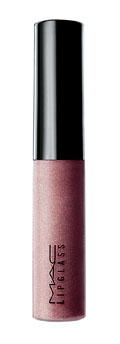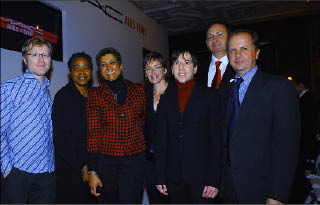


![]()
ONLINE
A Unique Business Model
Editors’ Note
Prior to assuming his current position in July 2006, John Demsey served in a variety of senior management roles within The Estée Lauder Companies, including Global Brand President of both Estée Lauder and M·A·C. Before joining The Estée Lauder Companies in 1990, he worked as Vice President of Sales at the specialty division of Revlon, which included the Borghese, Alexandra de Markoff, and Lancaster brands. He previously held executive positions with Bloomingdale’s, Macy’s, Benetton, and Saks Fifth Avenue. Among numerous philanthropic activities, Demsey is Chairman of the M·A·C AIDS Fund, and serves on the Fashion Group International advisory board, the honorary board of Love Heals, and the executive advisory board of the Children Affected by AIDS Foundation. Demsey holds an MBA from New York University and a bachelor of science degree from Stanford University.
Company Brief
Headquartered in New York, The Estée Lauder Companies Inc. (www.elcompanies.com) is one of the world’s leading manufacturers and marketers of high-quality skin care, makeup, fragrance, and hair care products. With around 26,000 employees, the company sells its products in more than 135 countries and territories, under brand names that include Estée Lauder, Aramis, Clinique, Prescriptives, Lab Series, Origins, M·A·C, Bobbi Brown, Tommy Hilfiger, Donna Karan, Aveda, Coach, and Ojon.
The M·A·C AIDS Fund was created in 1994. What was the rationale behind its development?
The fund was created by the founders of the M·A·C brand: the late Frank Angelo and Frank Toskan. When it started, the fund provided grassroots, emotional, kitchen-cabinet support for those affected by HIV/AIDS, particularly in the makeup and the fashion communities. It literally started in a kitchen in Toronto, at a hair salon where the brand was originally founded. The founders had canvassed the staff about what was most on their minds and how they wanted to give something back to society, to mark the success the brand had had in its early stages. Overwhelmingly, they wanted to do something to contribute to the fight against AIDS. At that time, the fashion community had been particularly impacted by the disease. Since then, our commitment to fighting AIDS has become one of our core guiding principles, in terms of the charitable heart of the company and the people who work for the company.

One of the products that has raised millions for AIDS research
Today, HIV/AIDS gets a lot of donor attention, but back in the early ’90s, that was not the case. Was your brand leading the way, to a certain extent?
When HIV/AIDS became such a huge health issue around the world, and particularly in the United States, there were two communities that mobilized efforts to help those affected: the fashion community and the film industry. From a fashion perspective, the M·A·C AIDS Fund was one of the first organizations that mobilized the HIV/AIDS effort. It was built around a unique and simple idea: One hundred percent of the selling price of a lipstick would go directly to a charity, and that charity’s monies would get to people right away.
In those early years, the company launched a lipstick, called Viva Glam: “Viva” meaning “to live life” and “Glam” implying “to be glamorous.” With this product, the company took a very serious health issue and tried to create something that was aspirational and would cut through the clutter, in order to raise awareness. The first spokesperson for the brand was Ru Paul, who is a man dressed as a woman, and the second spokesperson for the brand was K.D. Lang, who is a woman dressed as a man. It’s that type of gender-bending positioning that made M·A·C really stand out in the crowd. All the people who worked with the company were emotionally, financially, and physically committed to raising money and making a difference with the fund.
From 1994 to 1998, when I became Chairman of the fund, the company raised about $3 million. It’s interesting that M·A·C was the first external company that Estée Lauder acquired. We had been a passive investor with M·A·C prior to our going public in 1995. We needed to bring forward our financial loans to the founders of M·A·C, and we acquired 51 percent of the company. Over the course of three years, we went from owning 51 percent of the company to owning 100 percent of the company.
If you fast-forward from 1994 to today, M·A·C is now the number-one-selling makeup brand in the United States and Canada. For its part, the fund went from a grassroots, alternative, counter-culture charity with good intentions to the largest non-pharmaceutical fundraiser and granter for HIV/AIDS in this country. It has raised over $100 million via the sale of six Viva Glam lipsticks and three lip glosses.

Participants gather after a roundtable convened by M·A·C to discuss common misperceptions about AIDS
From $3 million to $100 million is quite a change. How has the structure and leadership of the M·A·C AIDS Fund evolved to harness this great growth?
I remain very involved with the M·A·C AIDS Fund, but knew very shortly after I took over the reins of the company that our philanthropy needed someone dedicated to making it work. Today, we have a terrific Executive Director, Nancy Mahon, leading the charge. Nancy was one of our grantees and, at the time, was working for a New York-based food bank, God’s Love We Deliver, that we have a longstanding relationship with. Her dedication to making the lives of people living with HIV and AIDS better was clear right away, but she also had a sensibility that meshed well with our values at M·A·C – a combination that is not always easy to find. Since Nancy came on board a little more than a year ago, she has really helped take the M·A·C AIDS Fund to new heights.
To what extent do you partner with other organizations in your work to help people with HIV/AIDS?
It’s very important for us to partner with like-minded individuals and organizations, whether it’s the Clinton Foundation, Paul Farmer, UNICEF, the UNDP, Stephen Lewis, or the Elton John AIDS Foundation. The on-the-ground capacity and supervision skills of these organizations are particularly important to us because, without that dimension, we would just have good intentions. In any given year, we work with 700 organizations worldwide.
Is it important for you to be able to track the impact of these activities?
Absolutely, because we’re still part of a publicly traded company and, at the end of the day, Wall Street measures you based on your financial performance, not necessarily on your performance as a good corporate citizen. Whether life should or should not work that way is a whole philosophical conversation.